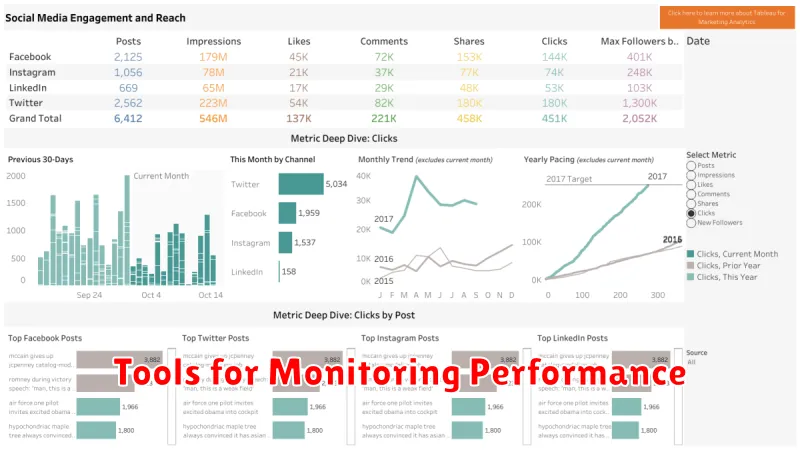In today’s rapidly evolving digital landscape, understanding and leveraging the right marketing metrics is more critical than ever. Businesses seeking to thrive in 2025 must move beyond vanity metrics and focus on those that genuinely reflect business impact. This article explores the marketing metrics that actually matter in 2025, offering insights into how to measure and optimize campaigns for tangible results. We will delve into key performance indicators (KPIs) that provide actionable data, enabling you to make informed decisions and drive significant growth. By understanding these crucial marketing metrics, you can effectively allocate resources, refine strategies, and achieve a demonstrable return on investment (ROI).
Staying ahead of the curve requires a data-driven approach, and selecting the right metrics is the foundation of a successful marketing strategy. Whether you’re focused on brand awareness, lead generation, or customer acquisition, tracking the metrics that actually matter will be crucial to your success in 2025. This article provides a comprehensive guide to the essential KPIs you should be monitoring, including customer lifetime value (CLTV), return on ad spend (ROAS), and conversion rates. By prioritizing these marketing metrics, businesses can optimize their efforts, improve efficiency, and achieve sustainable growth in the competitive landscape of 2025.
Vanity Metrics vs Actionable Metrics
In the evolving digital landscape of 2025, distinguishing between vanity metrics and actionable metrics is paramount. Vanity metrics offer a superficial sense of success, often large numbers that look impressive but provide minimal insight into actual business performance. Think follower counts or page views. While they can boost morale, they don’t necessarily translate to tangible outcomes.
Actionable metrics, on the other hand, provide valuable data that informs strategic decisions. These metrics are directly tied to business objectives and offer clear insights into user behavior and campaign effectiveness. Examples include conversion rates, customer lifetime value (CLTV), and customer churn rate. Focusing on actionable metrics empowers businesses to optimize campaigns, allocate resources efficiently, and ultimately drive growth.
Key KPIs Every Marketer Should Track
In today’s dynamic marketing landscape, tracking the right Key Performance Indicators (KPIs) is crucial. Focusing on relevant metrics provides actionable insights to optimize campaigns and demonstrate ROI.
Essential KPIs include website traffic, which reveals audience reach and content effectiveness. Conversion rate measures the percentage of visitors completing desired actions, such as making a purchase or filling out a form. Customer acquisition cost (CAC) helps understand the cost-effectiveness of marketing efforts.
Furthermore, customer lifetime value (CLTV) provides crucial insights into long-term customer profitability. Tracking return on investment (ROI) demonstrates the overall impact of marketing campaigns on revenue generation.
Tools for Monitoring Performance

Staying ahead in the ever-evolving marketing landscape requires leveraging the right tools. Accurate performance monitoring is crucial for data-driven decision-making. Several platforms offer comprehensive solutions for tracking key metrics.
Marketing analytics dashboards provide a centralized view of campaign performance, allowing marketers to visualize data and identify trends. These tools often integrate with various data sources, streamlining reporting and analysis. Look for dashboards that offer customizable reports and real-time data updates.
Social listening tools offer valuable insights into brand perception and audience engagement. Tracking brand mentions and analyzing sentiment can inform marketing strategies and improve customer relationships.
Aligning Metrics with Business Goals
In 2025, effectively measuring marketing success hinges on tight alignment with overarching business objectives. Key Performance Indicators (KPIs) must directly reflect progress towards strategic goals.
For example, if a primary business goal is to increase market share, relevant marketing metrics might include new customer acquisition cost, customer lifetime value (CLTV), and market penetration rate. These metrics provide actionable insights into the effectiveness of marketing efforts driving market share growth.
Conversely, if the focus is on profitability, metrics like return on ad spend (ROAS), conversion rates, and average order value become paramount.
This strategic alignment ensures that marketing activities contribute directly to bottom-line results and avoids tracking vanity metrics that offer little real business value.
Interpreting Data to Make Decisions
Gathering data is only the first step. Interpreting that data to inform strategic decisions is crucial for success in 2025. This requires understanding the context of the data and identifying meaningful patterns.
Look beyond vanity metrics. Focus on metrics that directly correlate with your business objectives. For example, instead of just tracking website traffic, analyze conversion rates and customer lifetime value. This provides actionable insights for optimizing marketing campaigns and improving ROI.
Data visualization tools can help simplify complex data sets and reveal hidden trends. Utilize dashboards and reports to monitor key performance indicators (KPIs) and identify areas for improvement.

